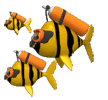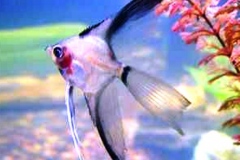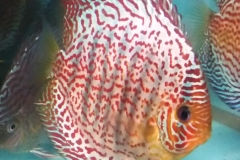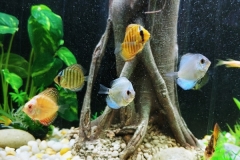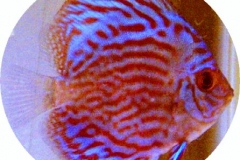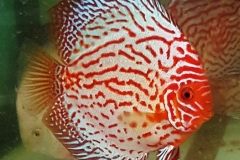We feed our Discus primarily Beef Heart Flake, but supplement it every day with other Flake and Freeze Dried Foods. The Multi Pack is great way to get started. As for the Freeze Dried Foods, I would start with the Brine Shrimp. Once your Discus get larger, you should switch to Earth Worms. Larger Discus also like Glass Shrimp. Beef heart Flake is extremely high in protein (higher protein than most other flake foods). It is also fortified with Vitamins and Minerals and you will find your Discus like it more than any other flake food. Your juvenile Discus will grow significantly faster when they are fed Beef Heart Flake.
Please feed your Discus three times a day, morning, noon and night. The night time feeding should be with the lights out. Discus are naturally nocturnal grazers. If there is some bullying or aggression in your tank, please feed them at both ends of the tank. Feed them as much as they can eat in 10 minutes. They should be kept with some Corydoras Catfish, Plecos or Loaches to eat any food uneaten by the Discus.
Please go to this link: http://www.somethingsphishy.com/discus-and-angelfish-food-c-41_67.html
If you are acclimating new fish into a tank, please do not feed your new Discus for 24 hours. As we detail in the Acclimation Instructions, you should not feed your new for fish at all for the first 24 hours after delivery. Any food given will likely not be eaten and can end up clouding the tank. After the stress of shipping, they will typically have no appetite. Feed them very little for the first week as they will still have little appetite. Over the next few weeks as they get used to their new home, they will slowly get their appetite back. You can increase the temperature to 88 degrees to speed up their metabolism and increase their appetite.
Please do not feed your fish live or frozen Blood Worms. Hexamitia is sadly a relatively common disease in Discus. They can carry the deadly disease Hexamitia and freezing does not kill the Hexamitia Cysts. Hexamitia is an internal parasite that can positively diagnosed by your fish showing long white stringy feces and they over time will become emaciated. It is hard to treat and is contagious. The cysts can lie dormant in the gravel and one of the only way to kill the cysts is to empty all fish and plants out of the tank, add bleach and let it for 24 hours and then do a complete water change every day for three days.
Freeze Dried Blood Worms are fine.
